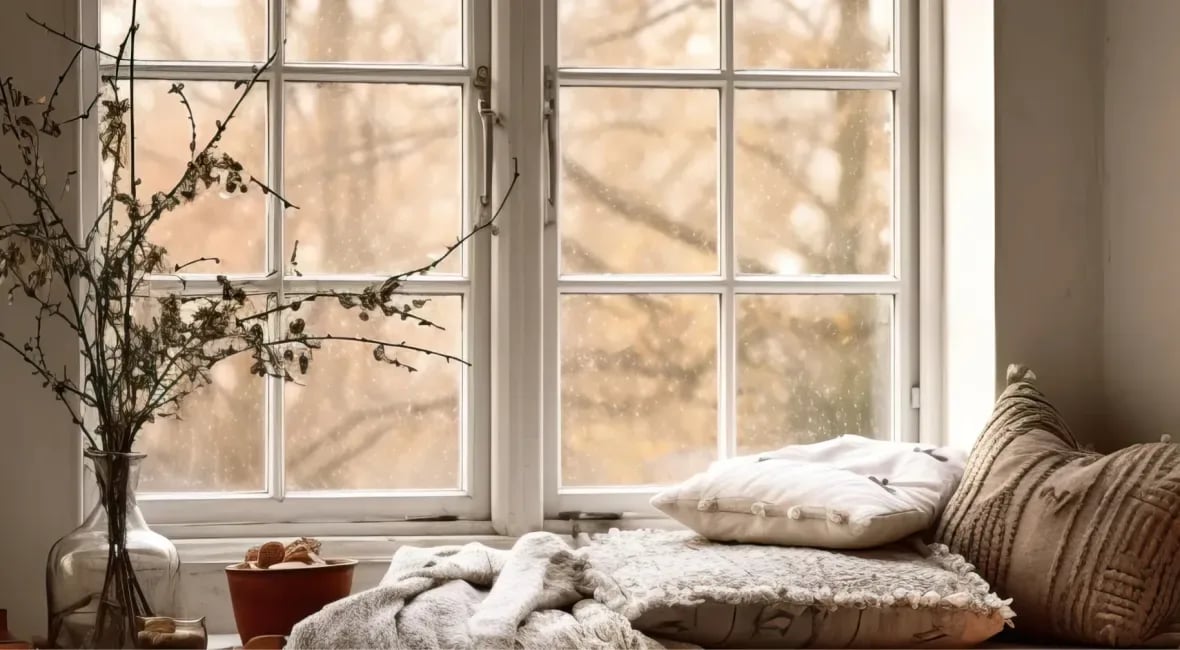As the days get shorter and the holiday season nears, it won’t be long before brisk fall days turn into freezing temps and driving snow. Avoid the potential toll a Midwest winter can take on your biggest investment by planning ahead and following these important tips for winterizing your home.
Stop the draft
One of the simplest things you can do to save money and be more comfortable in your home this winter is to reduce drafts. According to the U.S. Department of Energy (DOE), drafts can increase energy waste by 5% to 30%.
Stopping cold outside air from coming into your home can be as easy as placing a rolled up towel or draft blocker at the base of exterior doors. Or for about $25, you can get all the materials you need to caulk gaps around windows and doors. For a step-by-step guide to caulking your windows and doors, head here.
Clean Out Gutters
Clogged gutters can lead to water damage and ice dams during the winter season. Remove any leaves or debris from your gutters to ensure water flows freely away from your house. This will help prevent water from pooling near the foundation and seeping into your basement. Overhanging tree branches can also send leaves flying into gutters and break off in high winds causing damage to your roof. So, you should trim your trees at this time of year.
Service Your Furnace
Before the cold sets in, schedule a maintenance appointment with a professional HVAC technician. They will clean and inspect your furnace to ensure everything is running efficiently and safely. Then, remember to replace your furnace filter once a month. Dirty filters restrict airflow and increase energy demand, which leads to higher heating bills.
Protect Your Pipes
Insulate pipes that are located in areas around your home that are susceptible to cold temperatures, like unfinished basement or attics.. When temperatures drop below freezing, it’s also a good idea to keep a trickle of water running from your faucets to protect against freezing or bursting pipes.
Install Window Insulation Film
If you have older windows that do a poor job of blocking cold air, installing window insulation film can help minimize drafts and heat loss. This easy DIY project involves applying a transparent film to your windows using double-sided tape and then using a hairdryer to shrink the film tight.
Put Your Fans in Reverse
Many people don’t realize that ceiling fans can be used in the winter too. Warm air rises, and by reversing the direction of your fans’ blade rotation, the subsequent updraft will push any warm air trapped near the ceiling back down into the room.
Drain Your Small Engines
Regular gasoline has a limited lifespan, decomposing after three to six months. This can be problematic for small machines like lawn mowers or weed eaters, as the decomposed gasoline can clog up their engine’s carburetors. Consequently, starting these engines again when winter ends becomes difficult.
To prevent this issue, use a specially formulated fuel or fuel stabilizer, or run the machine until the gas tank is empty. Conversely, if you have a snowblower that’s been sitting in the garage all spring and summer, make sure it starts before you get caught by the first big snow. If it doesn’t, bring it in for service.
Check Your Roof
A leaky roof can cause significant damage during the winter months when snow and ice accumulate. Inspect your roof for any missing or damaged shingles and replace them promptly. If you haven’t replaced your roof in more than 15 years, hire a professional to inspect it.




